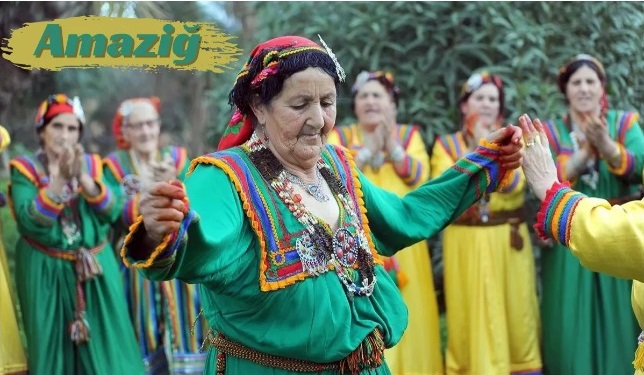No products in the cart.

The term “Amazigh” or “Imazighen” serves as a contemporary self-name for these people, emphasizing their shared cultural heritage and linguistic connection. The Amaziğ people have a rich history that predates the Arab migrations to the Maghreb, making them the original inhabitants of the region. Despite historical challenges like cultural marginalization and political shifts, the Amaziğ people have preserved their cultural identity through their languages, which serve as repositories of historical narratives and wisdom. The Amaziğ culture is characterized by its linguistic diversity, with various Berber dialects reflecting unique historical influences and contributing to a broader understanding of the Amaziğ identity. The Amaziğ culture is celebrated among the cultural elite in Morocco and Algeria, especially in regions like Kabylia, Aurès, and the Atlas Mountains. The Amaziğ people continue to play a crucial role in shaping the mosaic of North African civilizations with their resilience, unique languages, and rich cultural heritage.
The Amaziğ Language
The Amaziğ language, also known as Tamazight, is a significant part of the Amaziğ cultural heritage. It belongs to the Afro-Asiatic language family and is characterized by its diverse dialects and linguistic evolution, with each dialect reflecting the cultural nuances and historical influences of specific regions. Efforts to preserve and promote Tamazight have increased in recent years, with countries like Morocco and Algeria recognizing it as a national language, marking a crucial step in safeguarding the cultural identity of the Amaziğ people.
The Amaziğ Heritage
Tamazight is not only a means of communication but also serves as a repository of historical narratives, folklore, and wisdom, contributing to a deeper understanding of the Amaziğ heritage. The language is written in the Tifinagh script, although Arabic and Latin scripts are also used in modern times to write Tamazight. The oral traditions of the Amaziğ people, including poetry, cultural stories, and songs, play a vital role in preserving their cultural identity and history.
The Amaziğ as Element
The Amaziğ language, Tamazight, is an essential element that reflects the rich tapestry of cultures woven into the fabric of the Amaziğ identity. Its linguistic diversity and historical significance contribute significantly to the broader understanding of the Amaziğ people and their unique cultural heritage.
The History of the Amaziğ People
The history of the Amaziğ people, also known as the Berbers, is deeply rooted in ancient North Africa, dating back thousands of years. They are considered the original inhabitants of the region, with a rich and fascinating cultural heritage that predates the Arab migrations to the Maghreb. The Amaziğ people have played a crucial role in shaping the mosaic of North African civilizations through their resilience, unique languages, and diverse origins. Geographically, the Amaziğ people are scattered across North Africa, with significant populations in countries like Morocco, Algeria, Libya, Tunisia, Mauritania, Mali, and Niger. Each region inhabited by the Amaziğ people has its own distinct dialects and customs within the broader framework of Amaziğ culture. Despite historical challenges such as cultural marginalization and political shifts, the Amaziğ people have maintained their cultural identity through their languages, which serve as repositories of historical narratives and wisdom.
Some Traditional Amaziğ Customs and Practices
- Festivals and RitualsThe Amaziğ people celebrate life and their connection to the natural world through various festivals and rituals. For example, the Festival of Imilchil brings nomadic tribes together for a grand marriage market, while Shamanic practices like those of the Aït Khebbach involve invoking ancestors’ spirits for messages and blessings.
- Art and CraftsmanshipAmaziğ art is diverse and reflects their deep cultural roots. From ornate textiles to intricate pottery carvings and mesmerizing jewelry designs, their craftsmanship tells stories of history and serves as a memorial to their civilization.
- Cosmology and BeliefsThe Amaziğ people have a complex cosmology deeply intertwined with their geography and history. Elements of the natural world hold spiritual significance, with myths and legends woven into their daily lives. The celestial bodies like the sun, moon, and stars are seen as living entities influencing individual and community destinies.
- Role of WomenContrary to common misconceptions, women in Amaziğ society historically held significant roles as decision-makers, property owners, and individuals with considerable autonomy within their communities. This nuanced perspective challenges patriarchal narratives often associated with traditional societies.
- Legacy of Tifinagh ScriptThe Tifinagh script is an enigmatic aspect of Amaziğ culture, believed to be one of the oldest scripts still in use globally. Used primarily to write Tamazight, efforts are being made to revive and promote its use in preserving the cultural heritage of the Amaziğ people.
